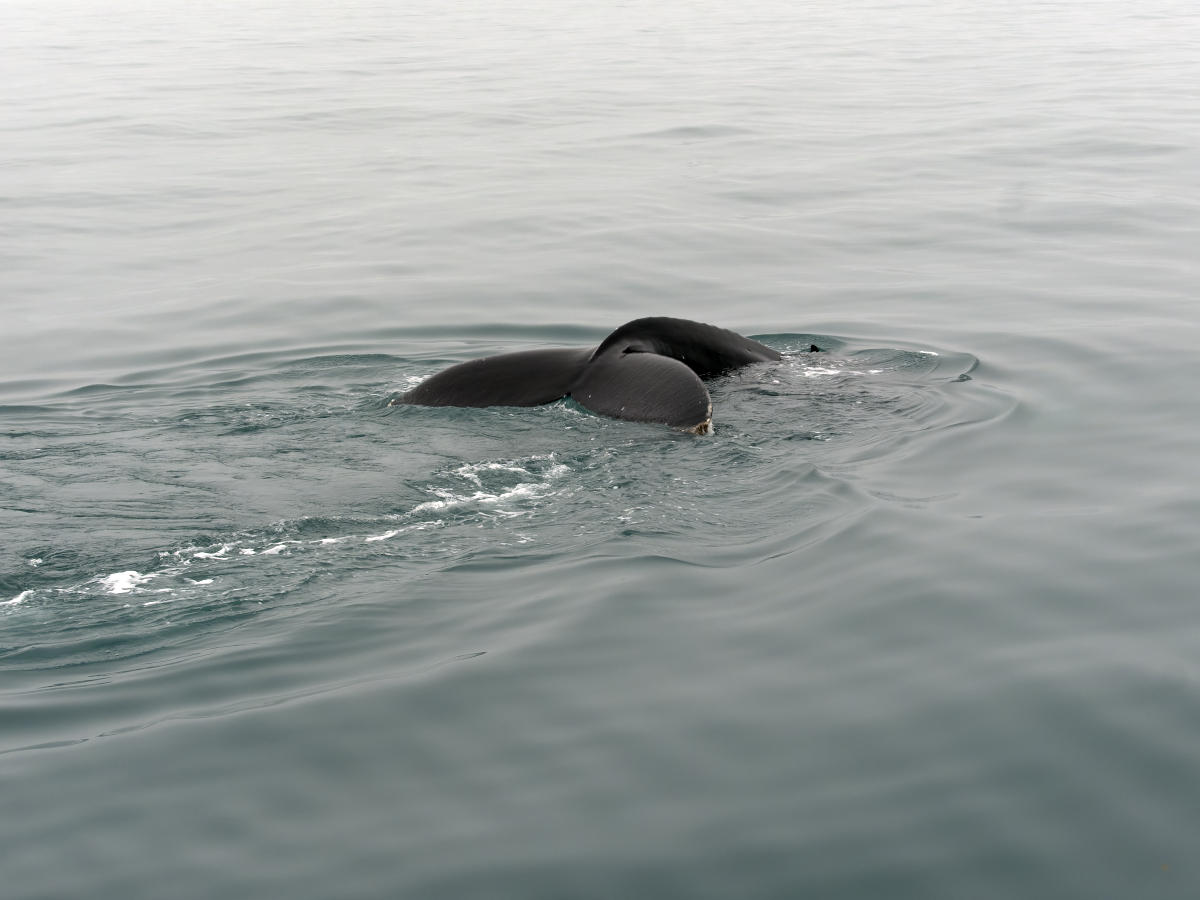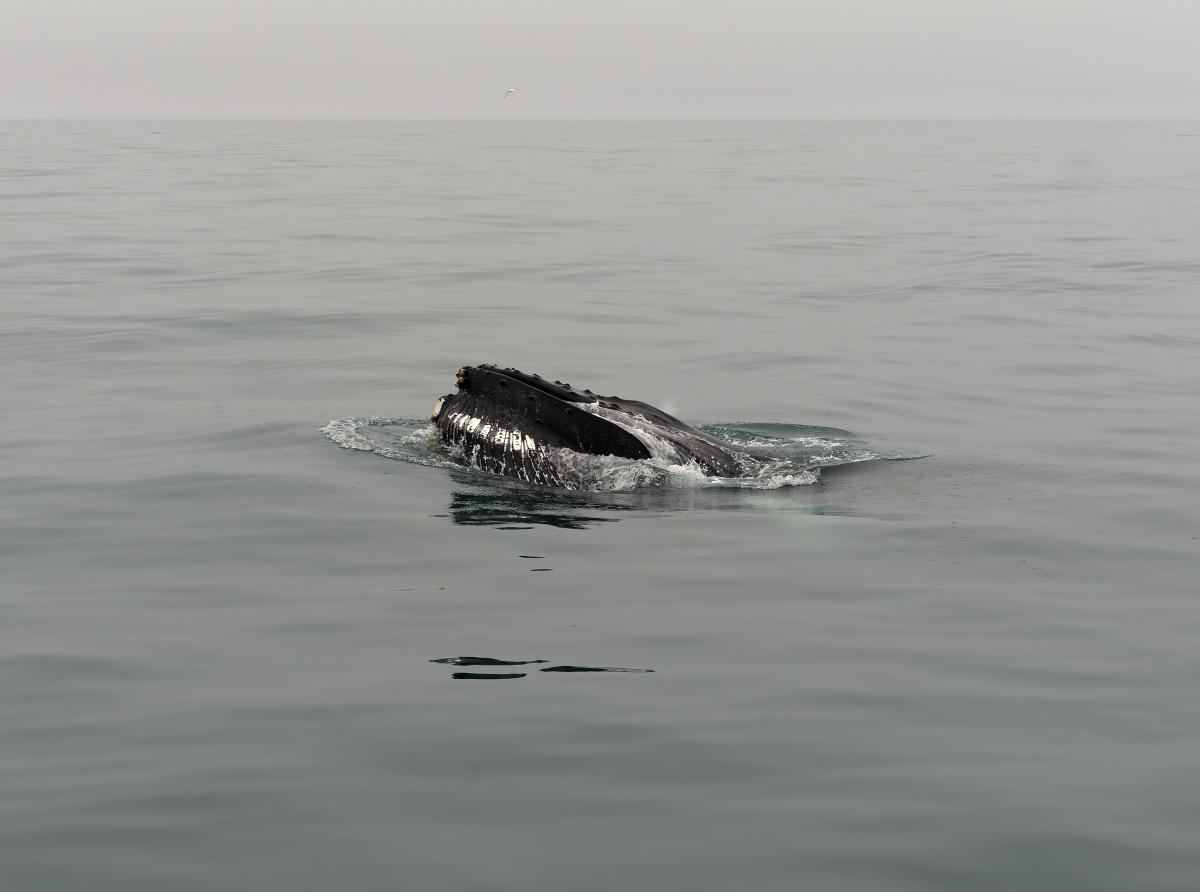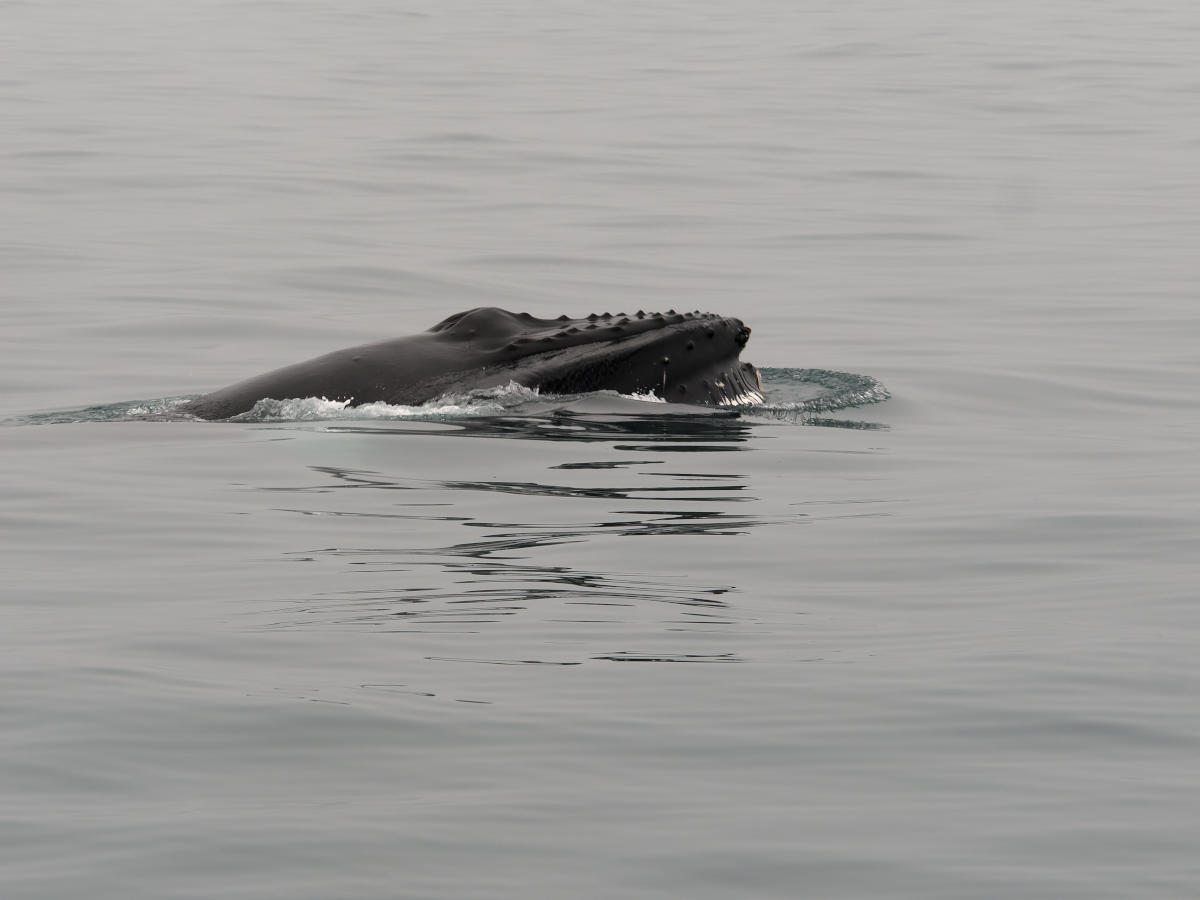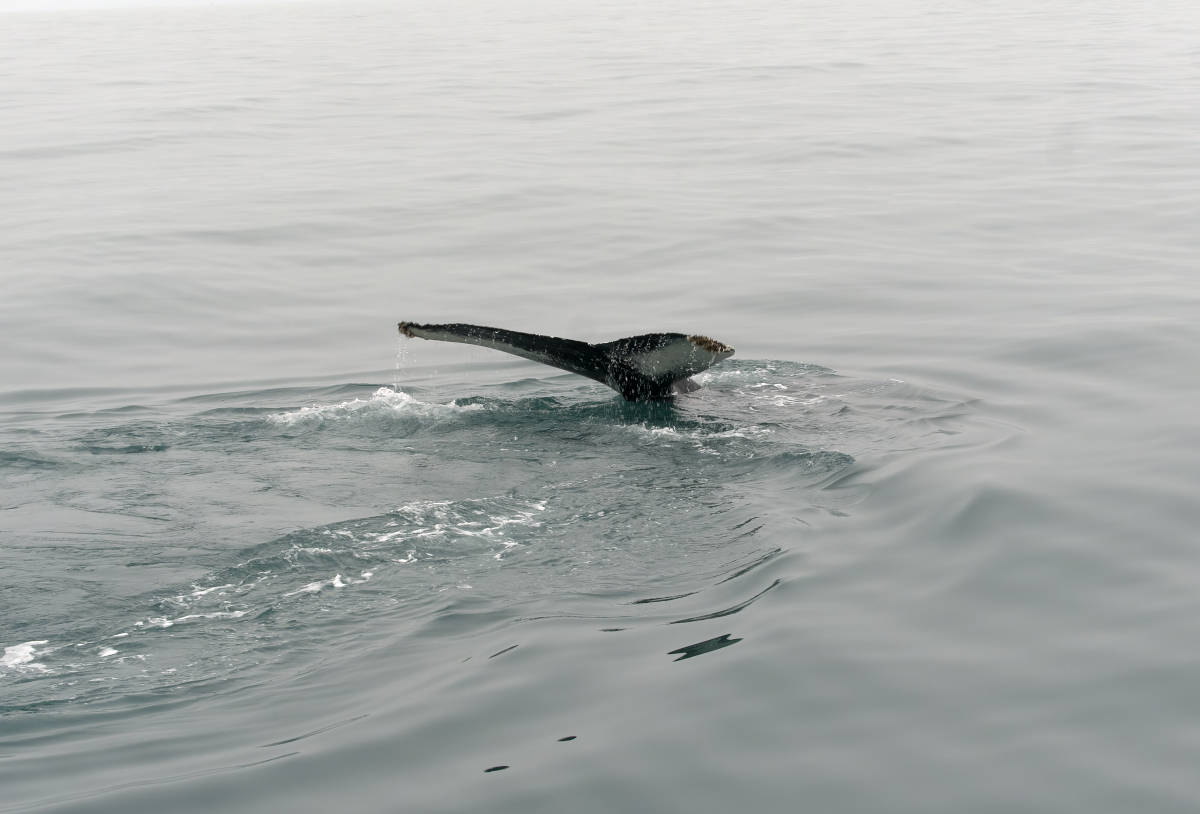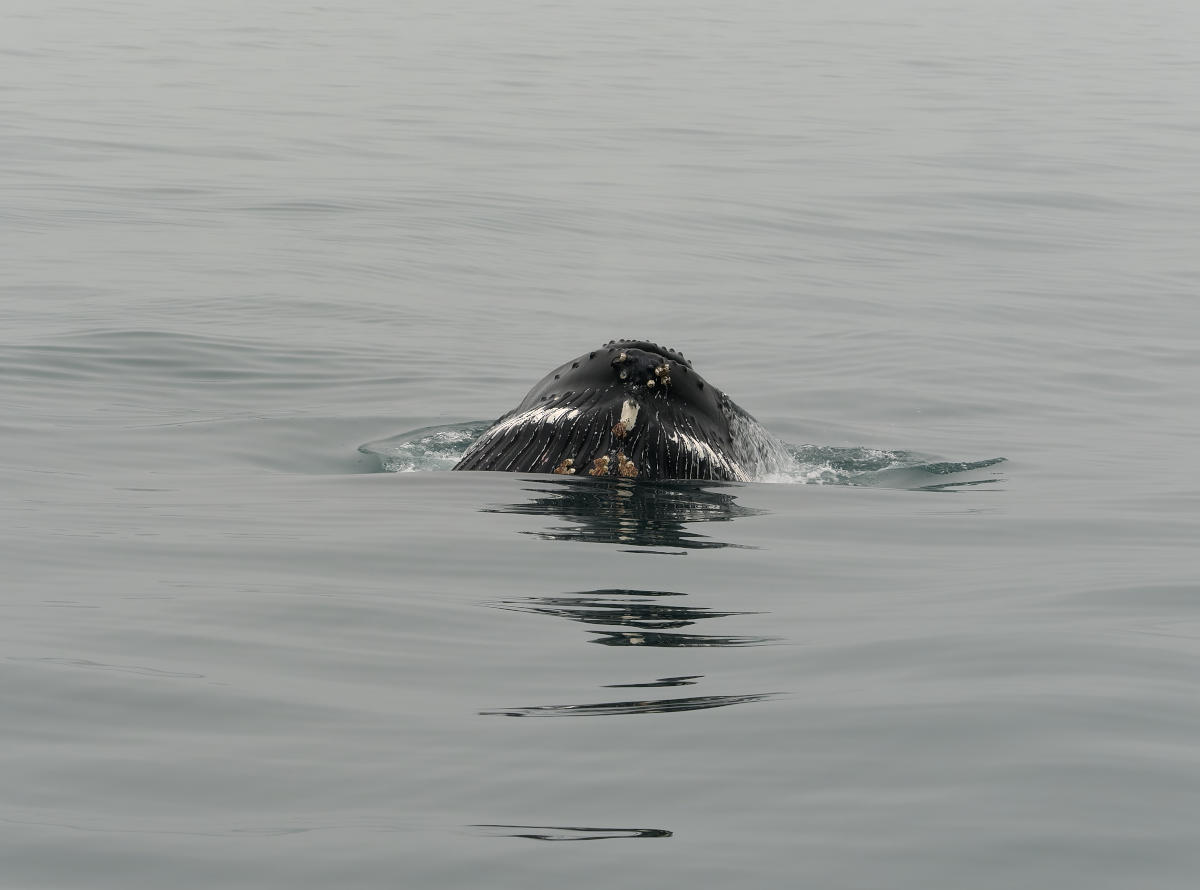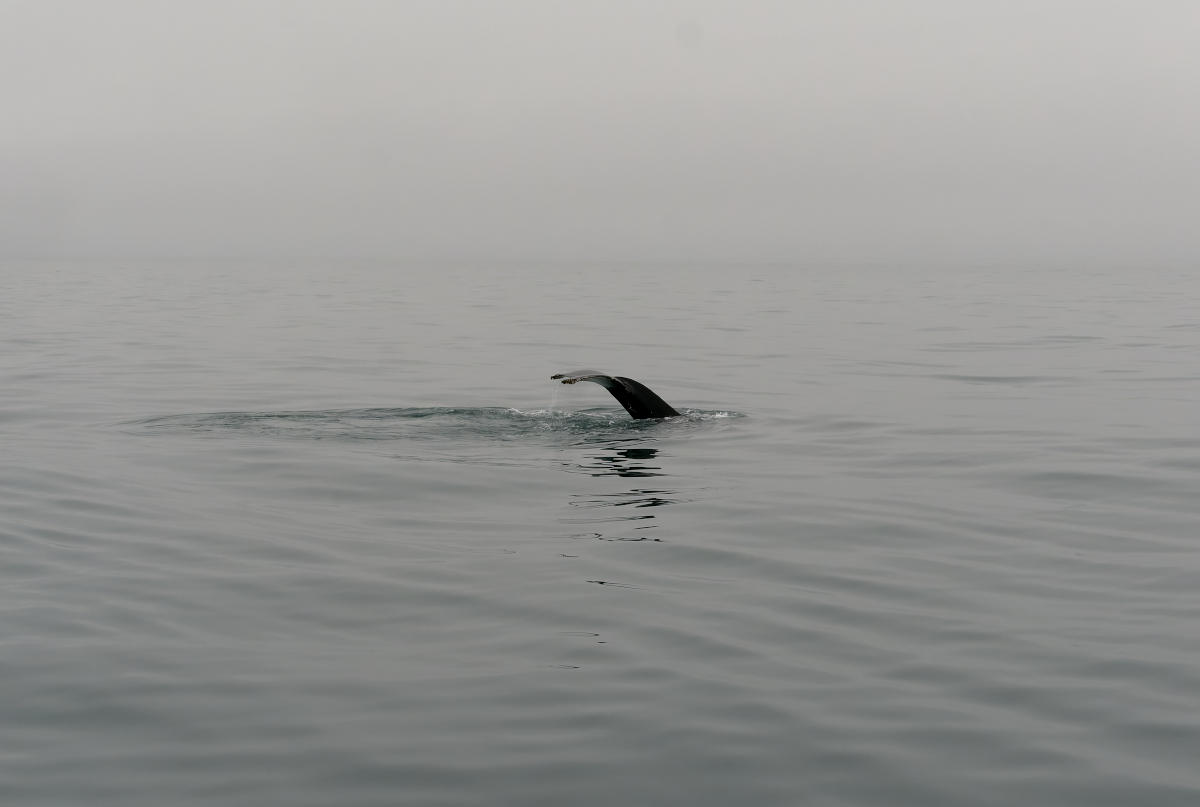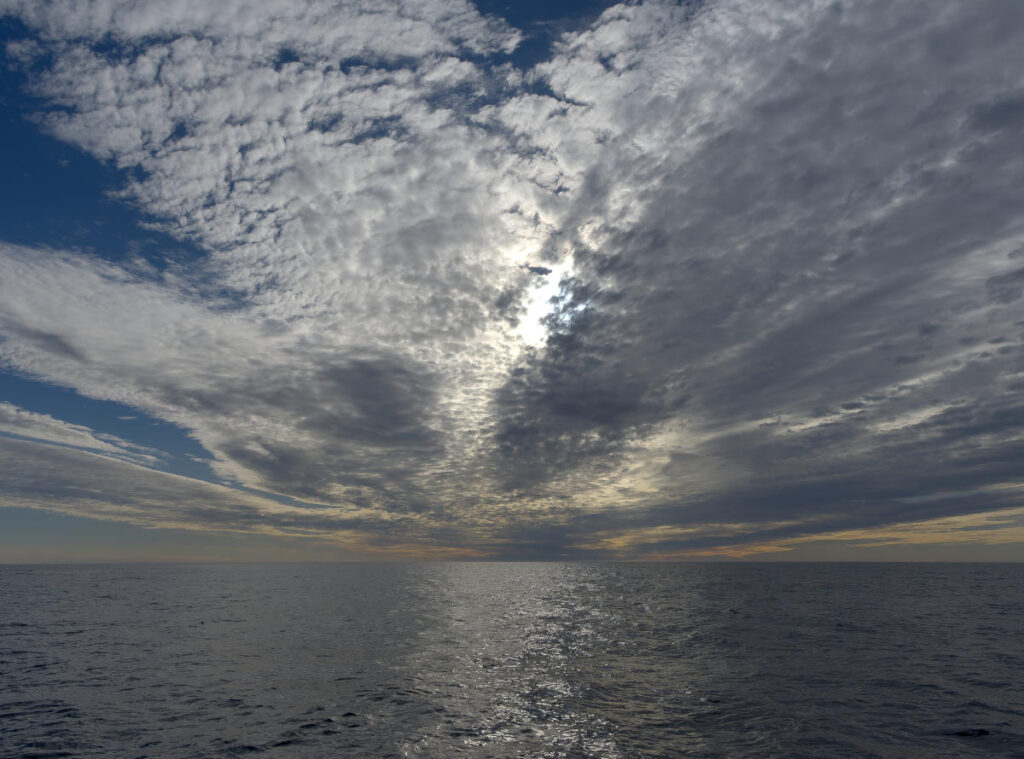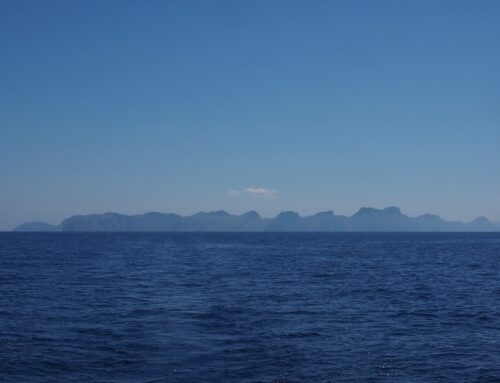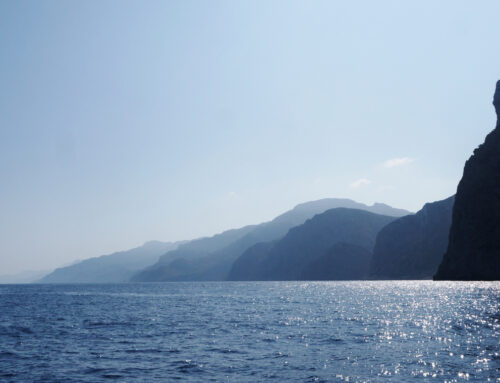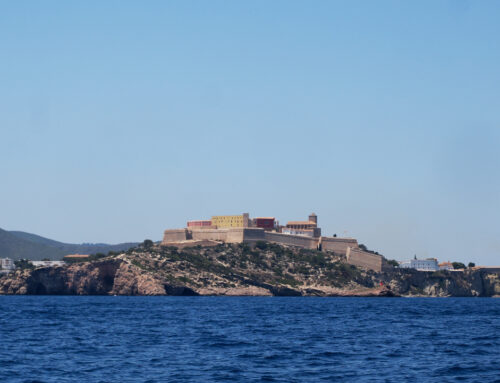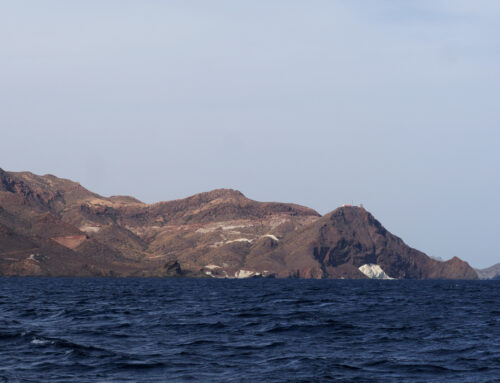An early August passage south across the Barents Sea
A WELL SET ANCHOR
The next morning, none too bright and early, we weighed anchor to start our passage south. Or rather, we tried to weigh anchor. Yep, it had set rock-solid after holding Yuma in 30-40kt winds for 24 hours or more. We got the first 40m or so of the chain in with the windlass, and then ‘clonk!’, no more. The anchor seemed properly stuck in the mud. Being stuck like this had been a good thing the day before, but now we really would prefer it to come out. Strangely enough, we did not feel like putting our SCUBA gear on to go and wriggle it loose in freezing glacier water with zero visibility – imagine swimming into a walrus or a polar bear under water…! So we persisted with motoring back and forth over the anchoring spot to try and loosen the anchor. At first the anchor chain pulled the boat up short, but after a couple of tries we succeeded and it surfaced with a generous amount of mud on the blades. Hooray, free!
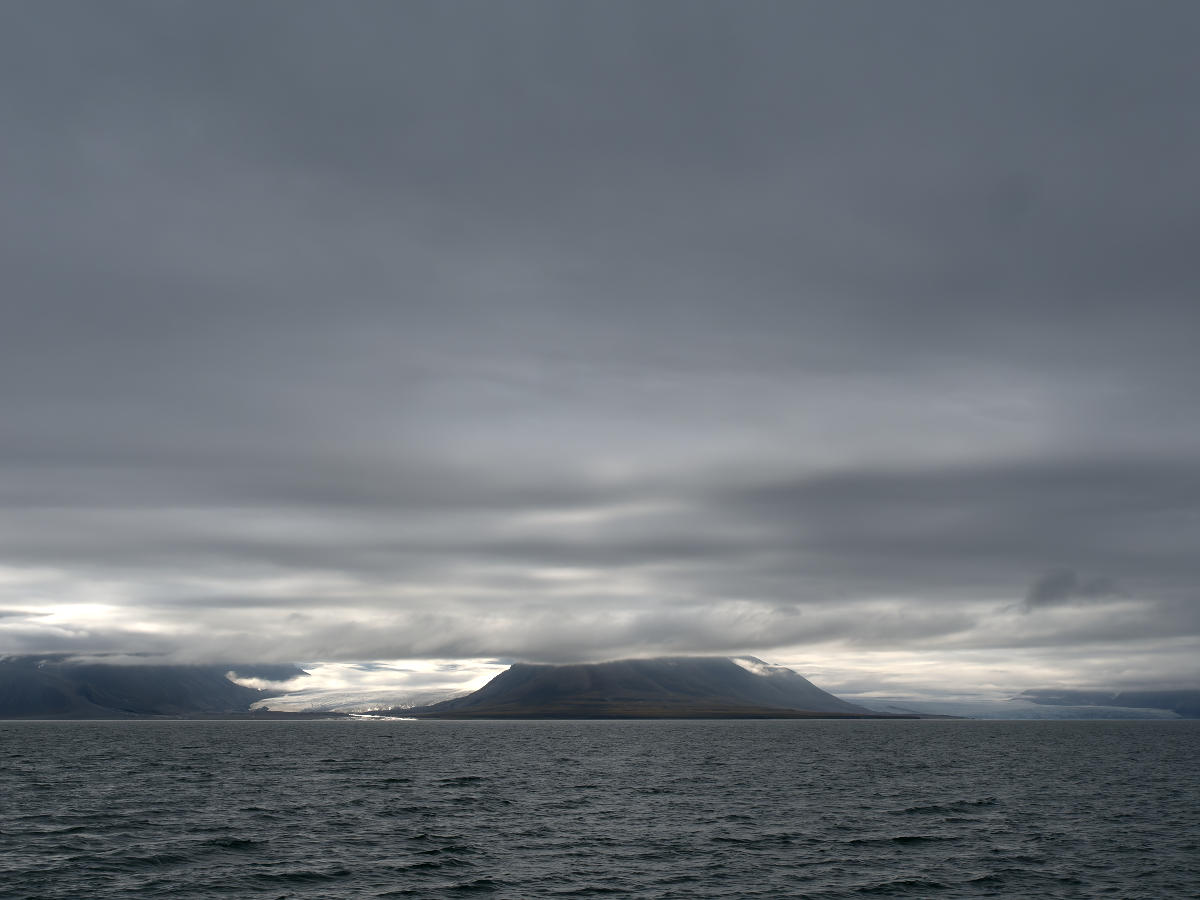
View across Bellsund from Van Keulenhamna.
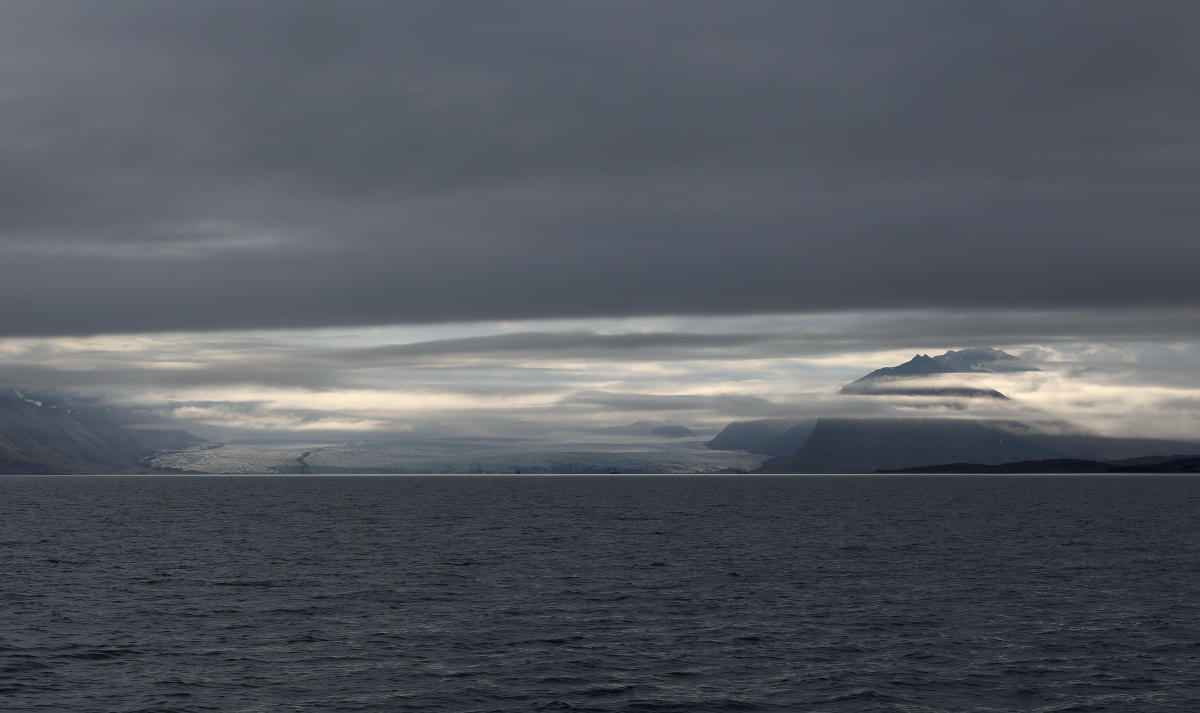
View towards Recherchebreen.
GOODBYE TO SVALBARD
Anchor up and cleaned off, we motored out of Van Keulenhamna into the Bellsund and in the direction of the open sea. Shortly after we left, SY Snow Bear, who had been anchored in an equally unpleasant spot for the last couple of days, left their anchorage on the northern side of the sound, also heading south. We were going to keep in radio contact as we went along – a bit of distant company on the passage just in case.
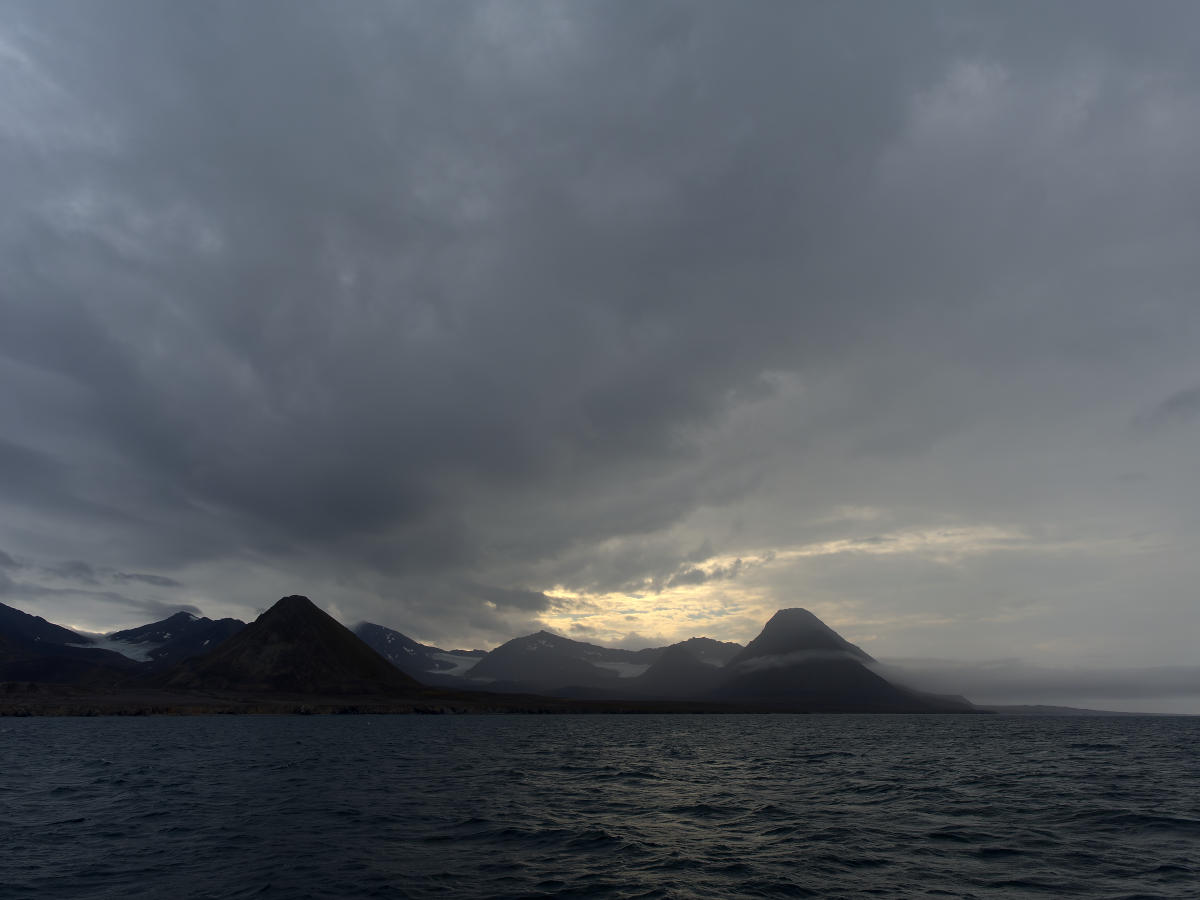
Exiting Bellsund.
We were able to run downwind for a short while under the genoa, but by the time we reached the open sea and altered course south for Norway, there was not a breath of wind. So, once again we had a choice of starting the motor or wallowing on a gently rolling, glassy sea. We chose the former; our short weather window wasn’t going to allow us the leisure of waiting days for wind.
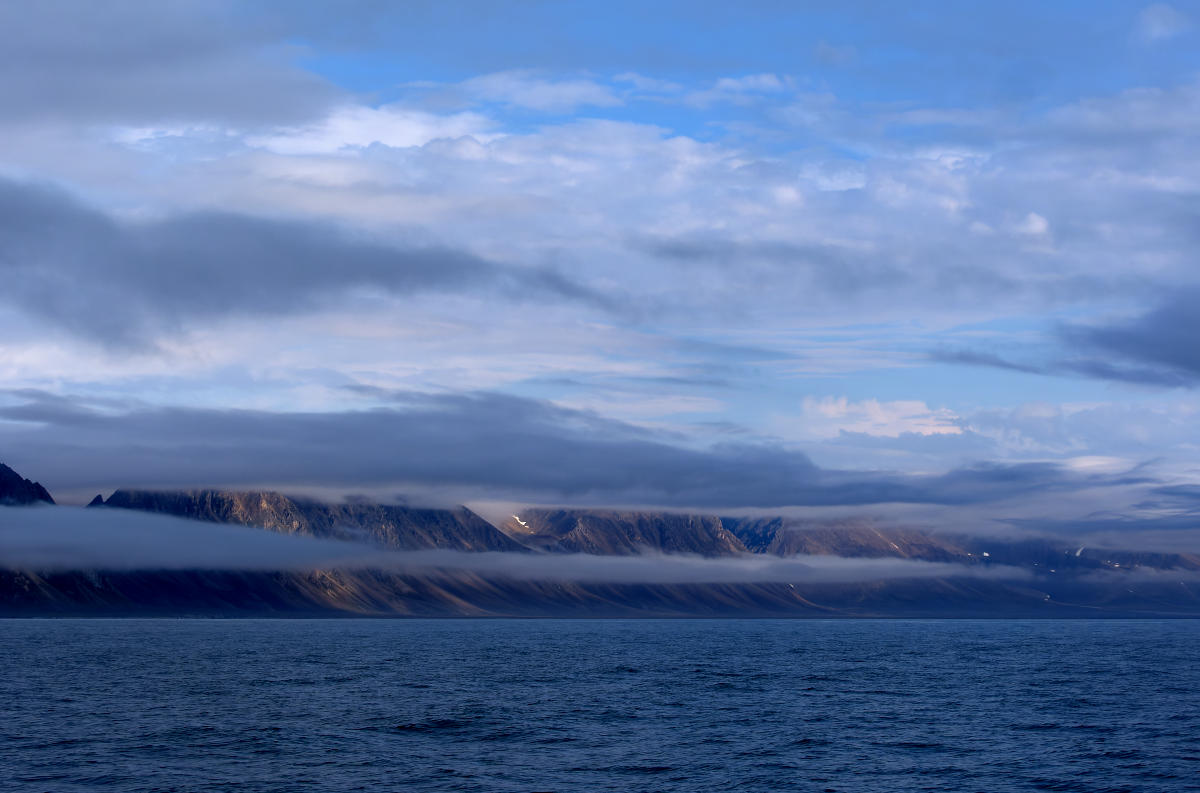
This time, we had partial views of the southern coastline.
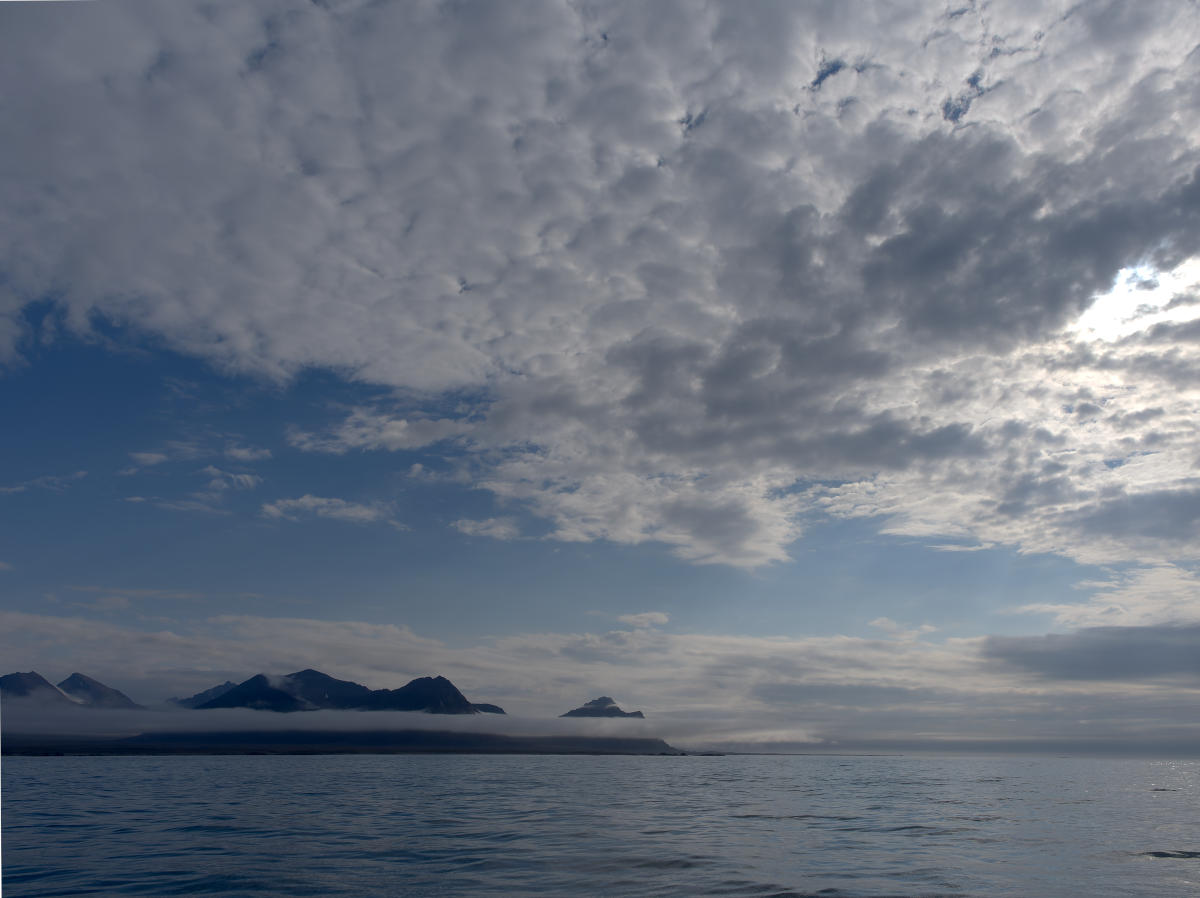
And those views were spectacular, as usual.
As we motored offshore, a low grey cloud settled over the Spitsbergen’s peaks and gradually slipped down their skirts. Before they disappeared into the grey we were treated to a last show of Svalbard’s dramatic lighting. Glaciers shone in brilliant sunlight beneath and behind the dark grey clouds along the coast while mountain slopes glowed pale ochre colours against steel seas and leaden skies.
We had different emotions as we watched Svalbard slowly disappearing from view. David’s heart felt almost broken to be leaving this wonderful place. Sigh. Although also sad to leave, Frederieke was looking forward to slightly less extreme environments.
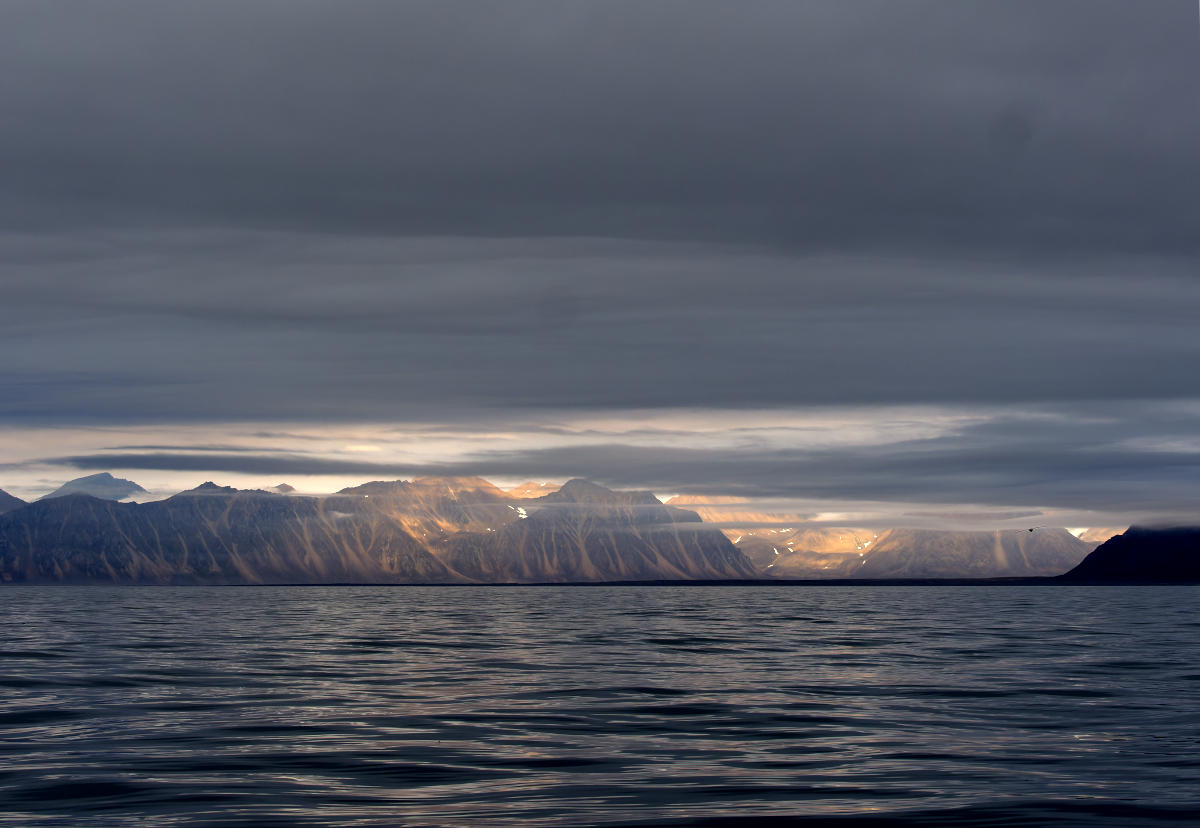
The scenery remained spectacular until the very end.
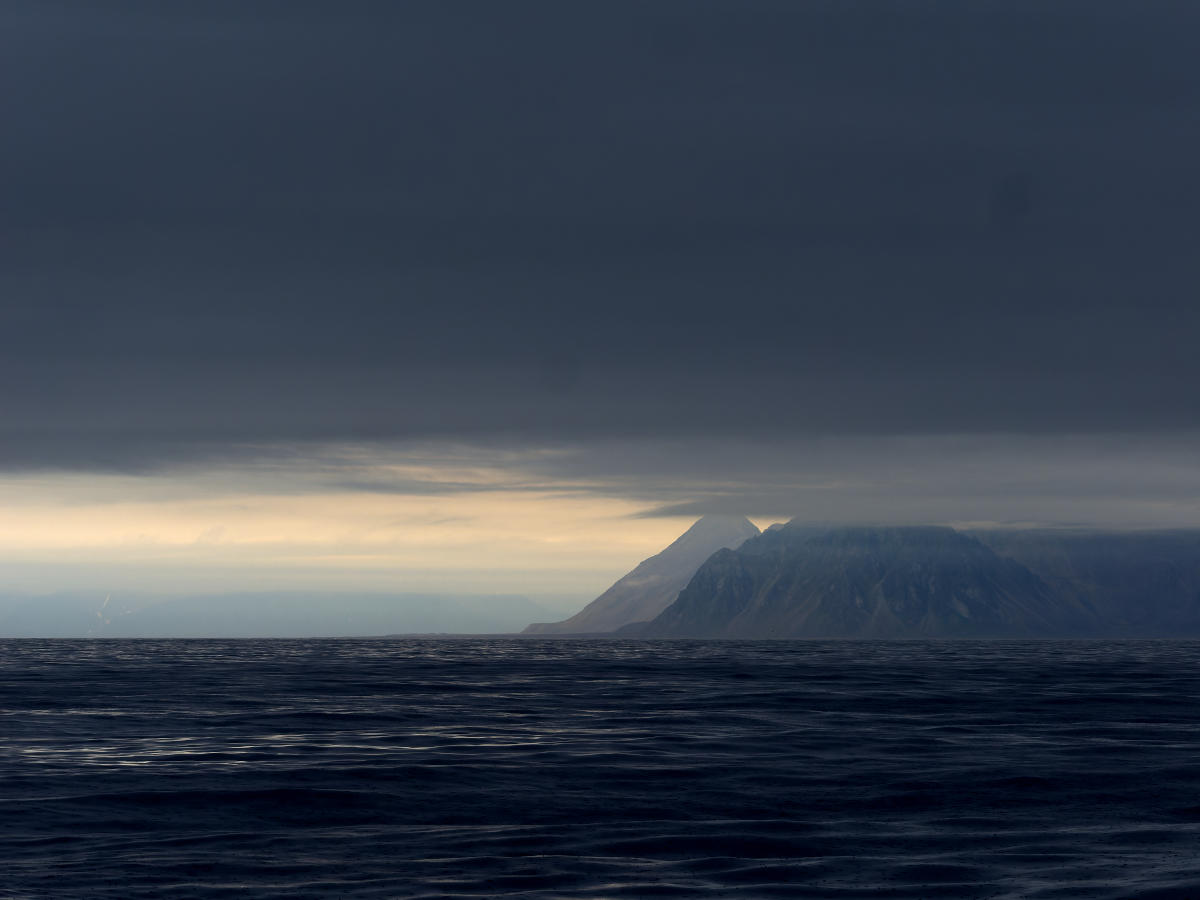
One of our last views of Svalbard.
CLOSE ENCOUNTER WITH A HUMPBACK WHALE
While we didn’t have the time to wait for winds that the forecast suggested weren’t going to arrive this close in to shore, we did have enough time up our sleeve for a bit of wildlife watching. After a couple of hours and well offshore from Spitsbergen, Frederieke spotted, off in the distance, a whale blow. We hadn’t seen any large whales since we’d arrived in Svalbard, so this was a chance to catch up on some of the locals. We motored to within a couple of hundred metres from the animal and then drifted and watched.

There she blows!
The ‘animal’ was a humpback, black and white and barnacled. It was feeding in shallow dives and surfacing with a mouth full of water and fish, or something. Fulmars were active around it but not excited so it seemed likely that whatever it was feeding on was ‘something’ rather than fish. The humpback was utterly unconcerned about us and fed around us, away from us, under us and next to us for an hour or more.
The whale was happily feeding and not the least bit concerned about us.
The whale stayed around long enough that we radioed SY Snow Bear to suggest that they come over to have a look. They had already seen that we had stopped on the AIS and were about to radio us to ask if we were OK. They were only 2 or 3 miles away from us, and after hearing about our humpback ‘situation’, they came over to enjoy the encounter.
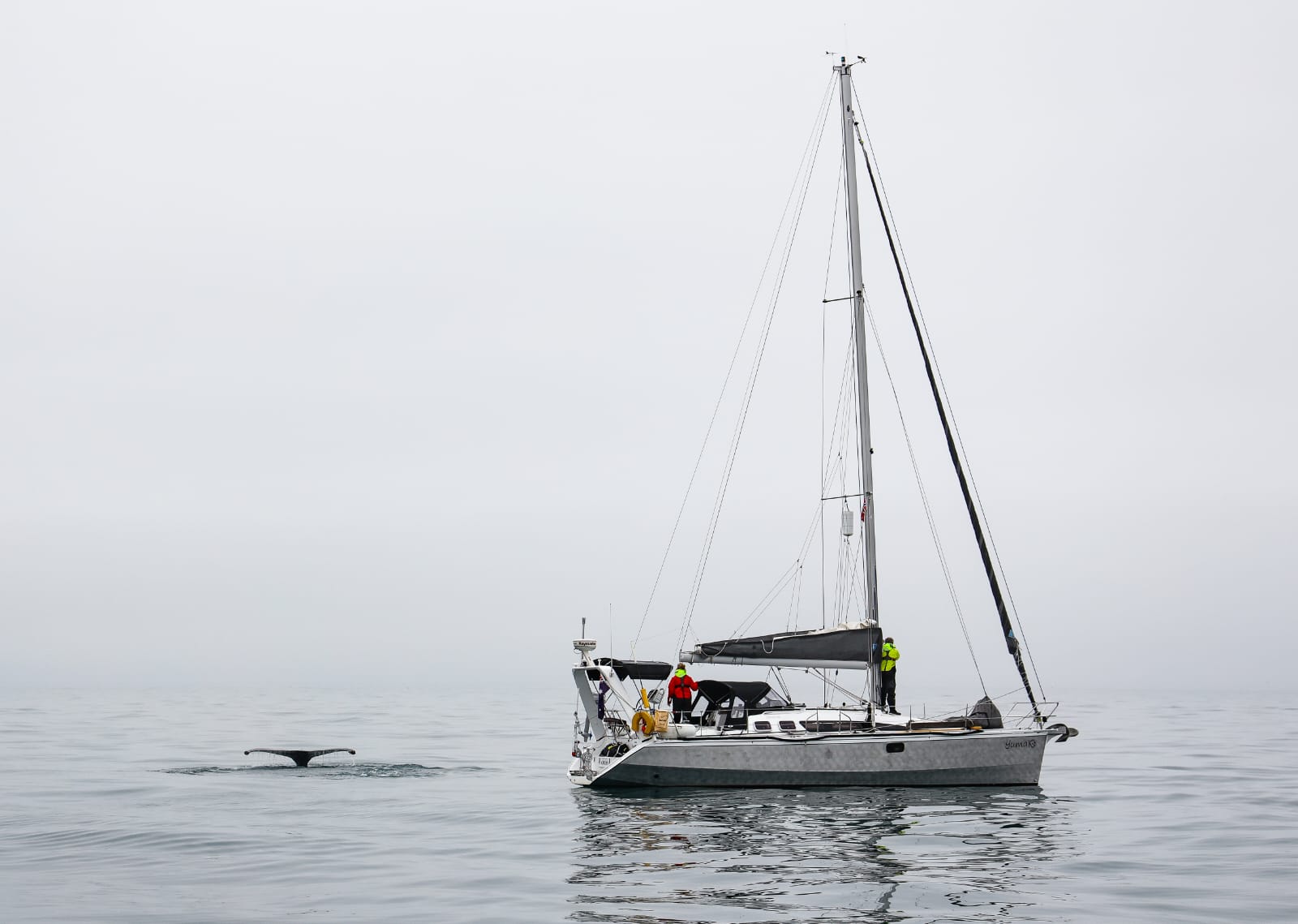
Whale-watching Svalbard-way (photo courtesy Sarah Pedersen).
More humpback whale feeding.
After two hours or so, we finally managed to pull ourselves away from the whale and motored off south into the Barents Sea proper.
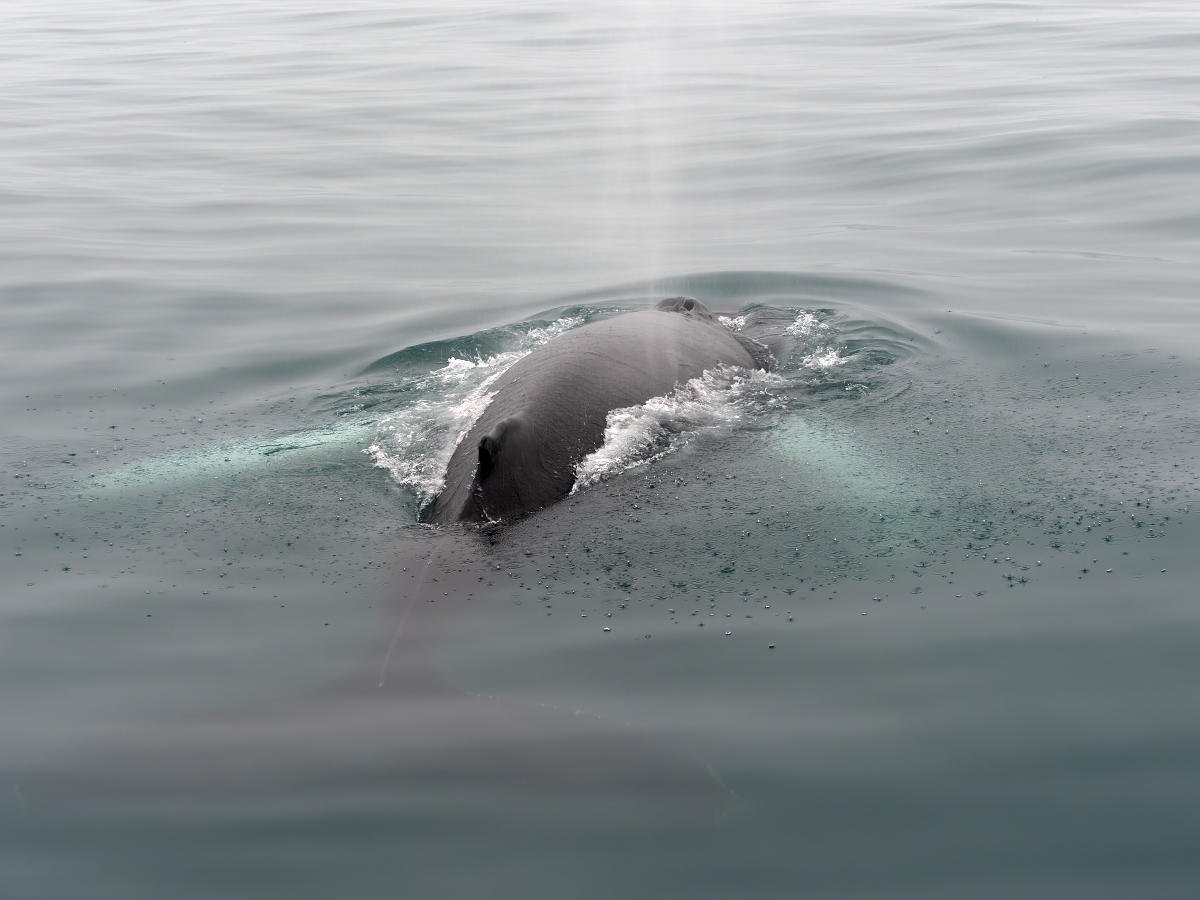
One last look at the humpback whale.
Over the next couple of days, the winds waxed and waned and with them the sails went up and down while the motor went on and off. A leisurely wander south wasn’t really on the cards, as we needed to clear two large sections of the Barents Sea that were closed off and we needed to beat a gale predicted to build up along the coast of the mainland. So, we tried to maintain a speed of at least 5kt by whatever means was appropriate.
SAILING THROUGH WATERS OF GEOPOLITICAL IMPORTANCE
Before departing Svalbard, Frederieke had checked the weather forecast and warnings for the area we were going to sail through from Van Keulenhamna to Harstad. This time, a rather fascinating warning was posted for huge areas north and south of the island Bjørnøya, namely that these areas would be closed off for five days for any sea and air traffic due to Russian missile tests. How exciting…! Luckily for us, a passage to Harstad meant we could skirt along the western edge of these areas without losing too much time, if any. Nevertheless, we still plotted the exclusion areas in our chart plotter to ensure we didn’t sail into them inadvertently, what with strong Barents Sea currents and all that.
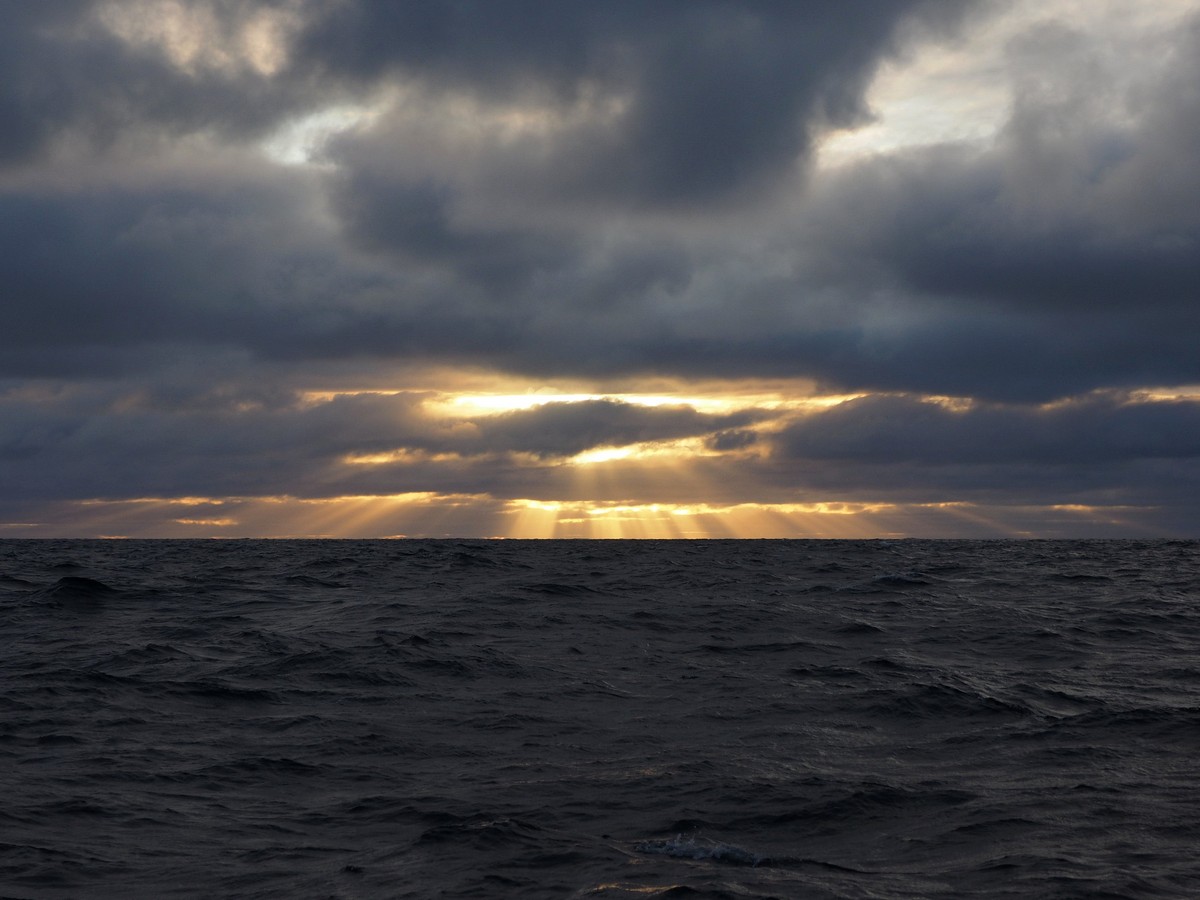
The midnight sun added some of its own spectacular fireworks to the Barents Sea.
During the two days or so that we sailed past these areas, we did not see or hear any fireworks from rockets being shot into the air (or, for that matter, accidentally landing anywhere near us, thank goodness). What David and SY Snow Bear did pick up during their watches though, was some very interesting VHF radio traffic. David heard “Warship, warship”, while SY Snow Bear (presumably sailing a bit closer to the action) got a more detailed “Russian warship, Russian warship, this is US warship”, followed by a whole lot of undecipherable numbers and codes. Neither ship was anywhere to be seen, and who knows what they were communicating about (swapping cinnamon bun recipes, perhaps?). Meanwhile, down below Frederieke was sound asleep in her berth, completely oblivious to the Cold War re-enactment taking place nearby.
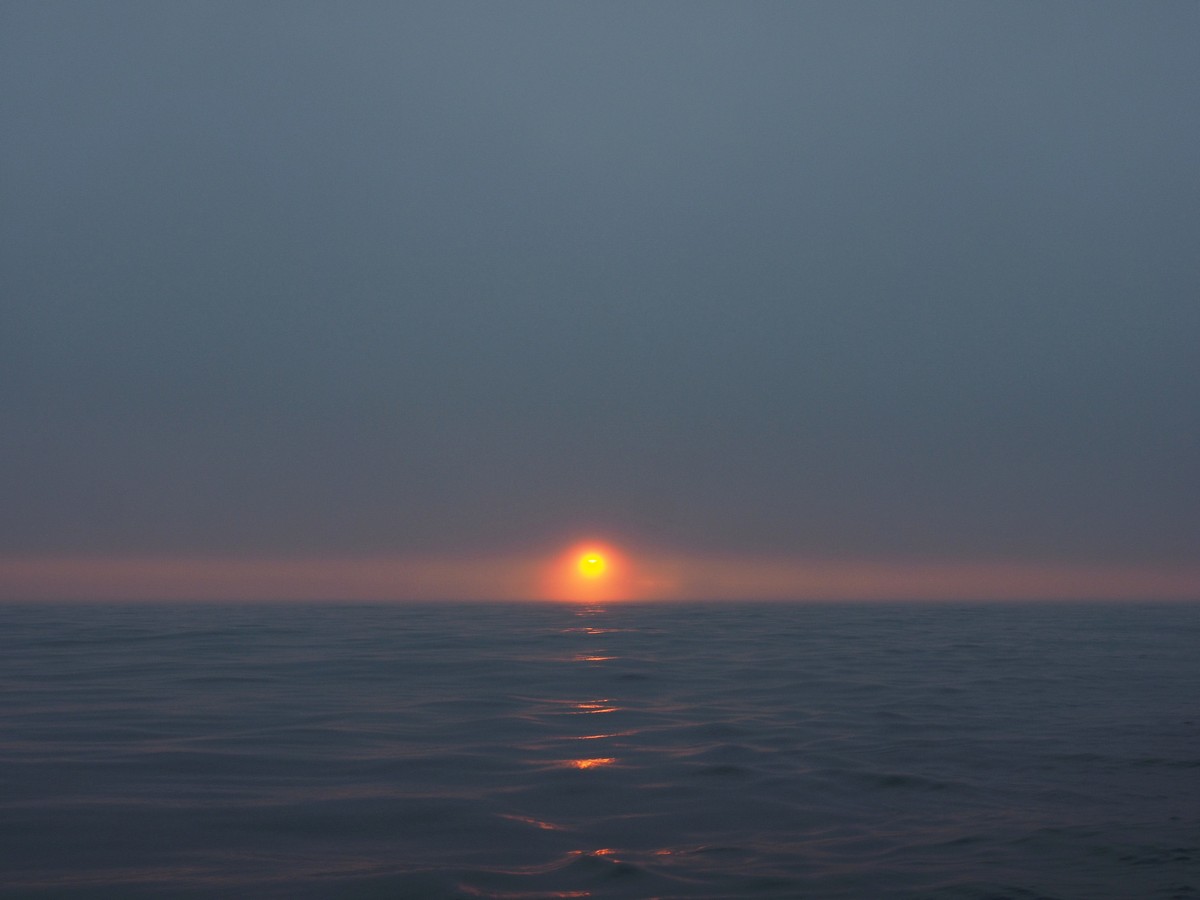
One of the last times we would see the midnight sun…
NEARING THE NORWEGIAN COAST
During the last 48 hours of the crossing, the winds improved blowing steady and fresh over our port quarter and we finally enjoyed a bit of steady sailing. With it, the intermittent drizzle became intermittent and not so intermittent rain and the seas began to build. As we approached the coast, the wind climbed up into the high teens pushing a shoddy mix of waves ahead of them.
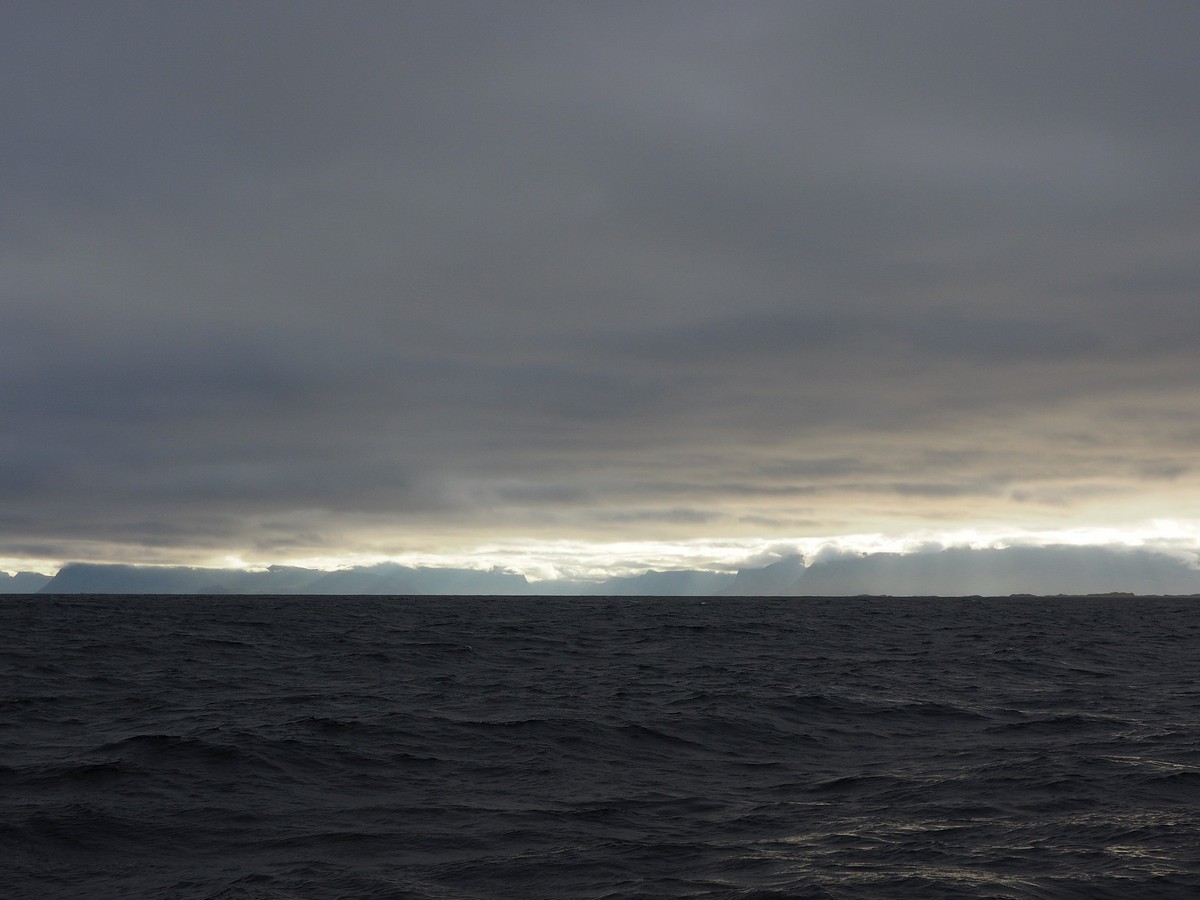
Our first view of the Norwegian coastline, grey and cloudy, just as we had left it 6 weeks before.
Just before the coast northeast of Andenes, the ocean floor leaps up from 2500m to 200m in the space of a few miles and the seas follow suit, meaning that we had a bit of a dark and wet midnight rodeo ride back into Norway’s fjords. At this steep drop-off, sperm whales loiter at the surface and dive down to feed on large squid. Unfortunately, with the big waves and strong winds there was no way we were going to see them or get another whale-watching session.
BACK TO CIVILIZATION
Happily, by dawn we were in the protection of the land and cruising along pleasant fjords rimmed with green grass and tall forests. It all seemed a bit unfamiliar and pastoral after Svalbard’s rocks and ice, but there were farms and houses and roads and ferries and small dinghies with blokes fishing. Civilization, I guess.
By 1100, five days after departing Van Keulenhamna, we were happily ensconced in Harstad’s marina next to SY Snow Bear and ready to have a good long sleep.

